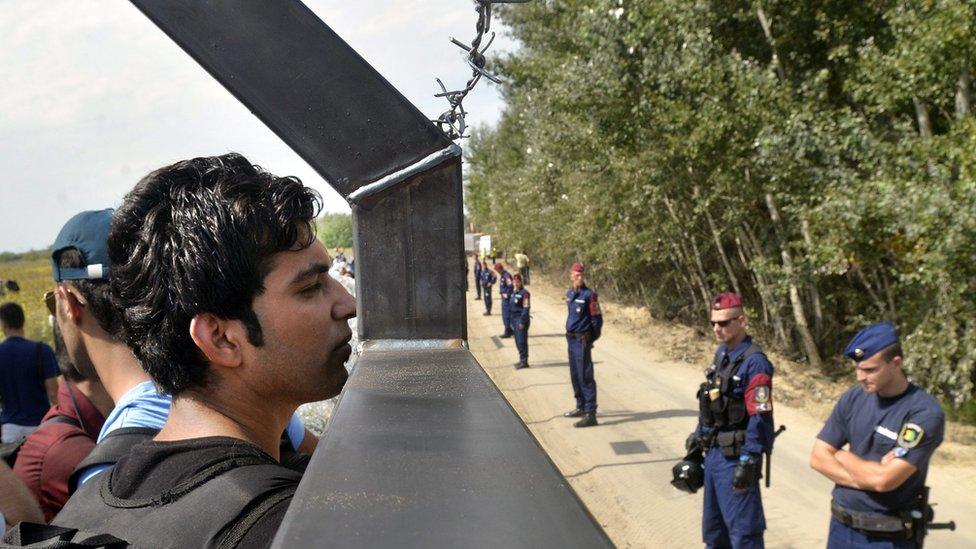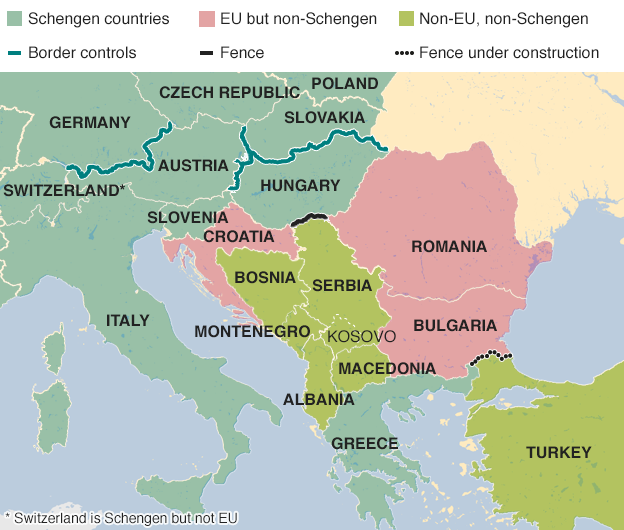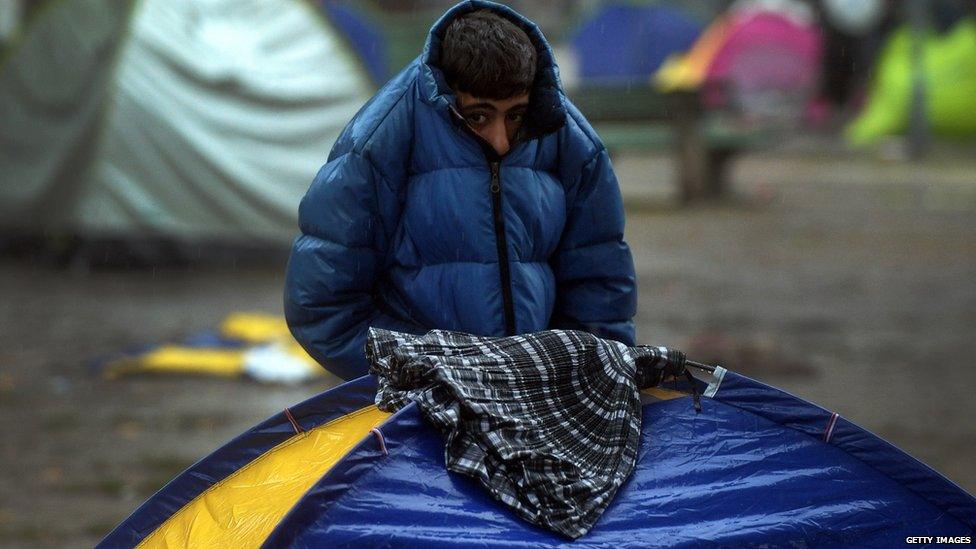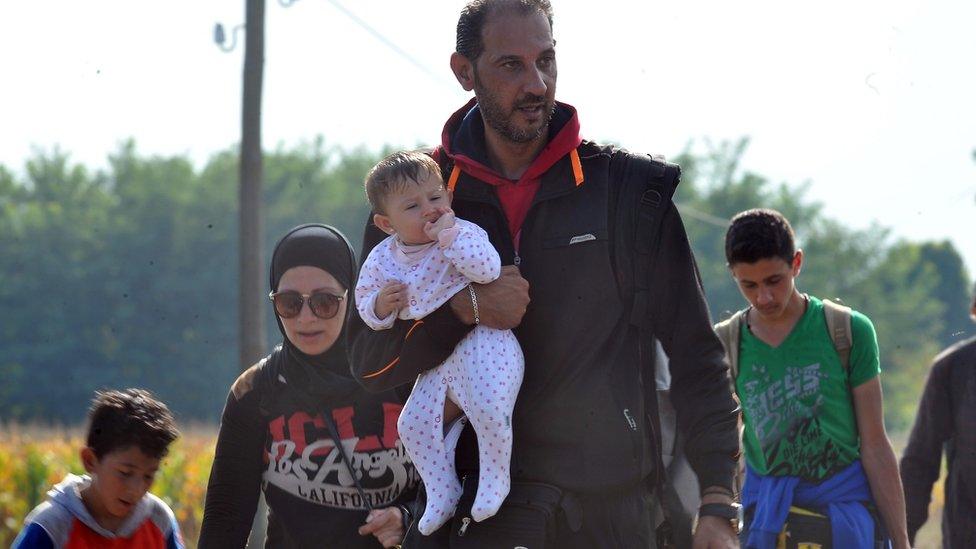Migrants look to Serbia as Hungary shuts its doors
- Published

Migrants stuck in Serbia can only gaze across the new border fence into Hungary
All year, Serbia has taken a relaxed attitude towards the migrants and refugees entering from neighbouring Macedonia.
The authorities understood that few of the people coming in would want to stay, although some expressed regret that people desperately fleeing conflict did not view Serbia as a desirable destination.
But Hungary's fence and its criminalisation of unofficial border crossings has brought a halt to the flow of people across Serbia and left hundreds stranded at the fence.
If an exit into Hungary becomes impossible, the number of refugees here may begin to rise, challenging not only the country's capacity for dealing with asylum seekers but its citizens' hitherto admirable tolerance and empathy.
The government's Commissariat for Refugees has told the BBC that it is expecting more people to stay longer in Serbia. It has been preparing extra spaces at its existing asylum centres and is in the final stages of preparing several additional facilities.

But that might not be enough if Hungary carries out its proposal to send rejected asylum seekers back to Serbia - an idea that has not gone down well with Belgrade. Social Affairs Minister Aleksandar Vulin has said that Serbia would not accept any people that Hungary attempts to return under duress.
The UN's refugee agency (UNHCR) is backing Serbia on this issue. It says Hungary is wrong to classify its neighbour as a "safe country" for asylum seekers - as Serbia does not have the capacity to deal with a large number of refugees.
A spokesperson said: "It can't be expected to solve a problem the whole of Europe has failed to resolve."

For weeks, a park beside Belgrade's bus station has become a tent camp for people trying to get to Germany
In Belgrade, the informal transit camp next to the city's main bus station is quieter than it has been for weeks, with just a scattering of tents in the park.
Volunteers say many people left for the Hungarian border in a last-gasp dash to beat the barricade. But more may come from Macedonia to replace them before long.
Another possibility is that people will simply find another route into the EU's passport-free Schengen area. Serbia has borders with many countries, including EU member states Bulgaria, Romania and Croatia. Unlike Hungary, none of the three are yet in the Schengen zone.
Authorities in the Croatian capital, Zagreb, are preparing for migrants to try their luck. Croatia's Assistant Minister for European Affairs, Maja Bakran Marcich, told the BBC it was "a crazy situation" but that so far its borders with Serbia and Hungary were quiet.

Most migrants and refugees are heading for Germany, Sweden and other northern European countries
"We are getting ready even though it's calm," said Ms Bakran Marcich.
"Things are moving fast. You cannot hermetically close a border and we are obviously aware that you can make a detour via Croatia and back into Hungary."
Croatia's preparations include bolstering its border police and ordering additional fingerprinting machines for the registration of asylum seekers.
"Croatia would not just allow people to move through," she said. "They would be stopped and returned at the Slovenian and Hungarian borders in any case. We would accommodate people, register them and see if they wanted to stay in Croatia or move on."
"We could absorb the immediate wave, and then we'd have to see. This is just the beginning."